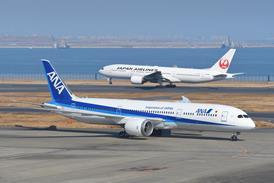MICHAEL PHELAN / LONDON
System transmits patient's vital signs while maintaining two-way voice communication
UK telemedicine specialist Remote Diagnostic Technologies (RDT) hopes to use Boeing's Connexion broadband communications system to improve the quality of in-flight emergency medical care following trials on a British Airways aircraft earlier this year.
BA used its Connexion-equipped Boeing 747-400 in May to transmit a passenger's vital signs, 12-lead electrocardiogram (ECG) and high- quality still images while using voice-over internet protocol technology to maintain continuous two-way voice communications via a receiving station on the ground. A similar trial was conducted with Lufthansa, the other operator that took part in Boeing's Connexion trial.
RDT says experience has shown that continuous two-way communication is essential for the system to work.
The trial used RDT's Tempus 2000 device, which is already installed on BMI British Midland's long-haul fleet as well as several private aircraft. Virgin Atlantic Airways also intends to fit the system on its aircraft. RDT says it is confident of securing a third airline customer in the near future.
BMI has used the system more than 30 times in service, for incidents ranging from fainting to a cardiac arrest.
In the latter instance, using the MedLink system of Phoenix, Arizona-based MedAire, the data was sent via an in-flight telephone to physicians in the accident and emergency department of Phoenix's central teaching hospital, who advised on what action to take.
Tempus 2000 is designed for use by non-experts and uses an in-built modem to transmit a passenger's blood pressure, pulse rate, temperature, ECG, blood oxygen and carbon dioxide levels. BA is one of about 30 airlines using the MedLink service, although not necessarily with Tempus 2000.
Source: Flight International























